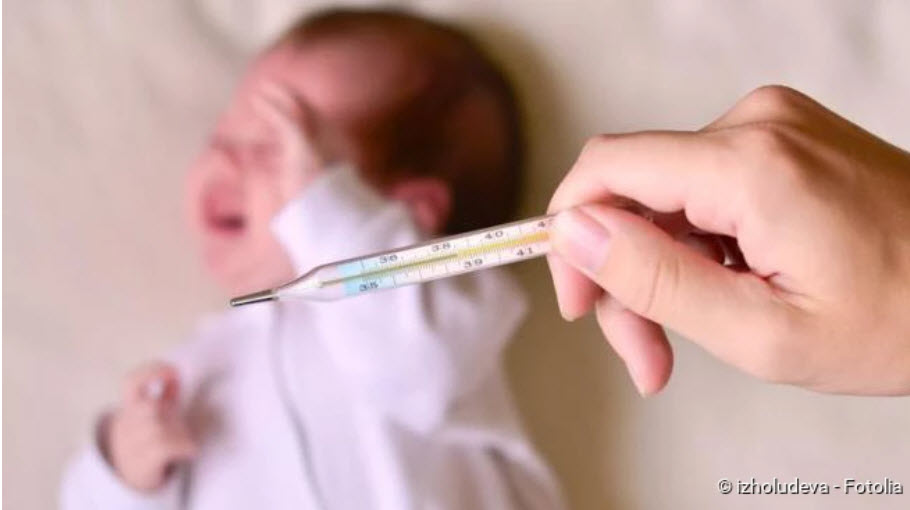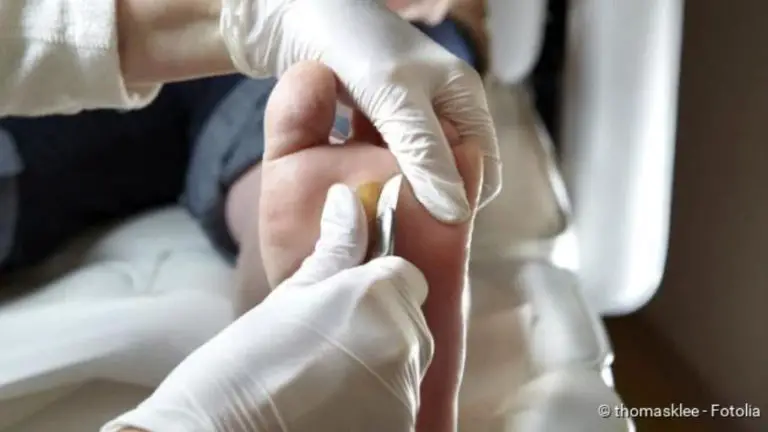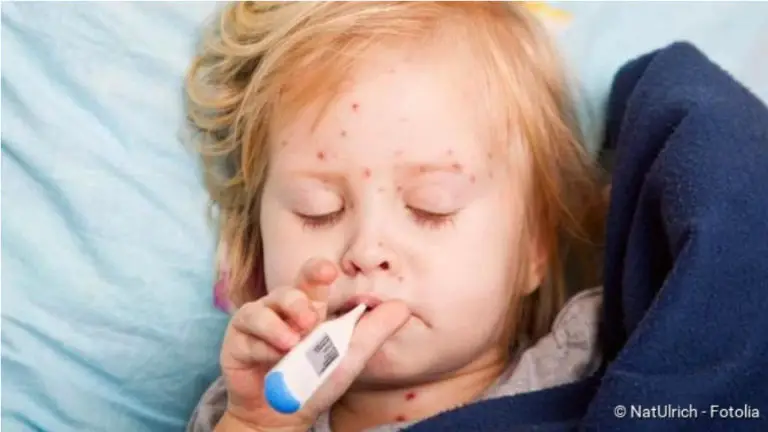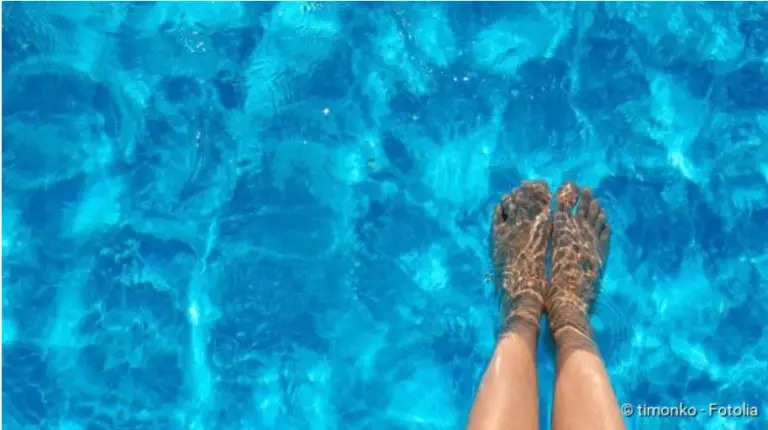Roseola: infection, signs, prognosis
Roseola: infection, signs, prognosis

Roseola: Description
Roseola infantum, is a mostly harmless viral infection with herpes virus. It occurs in babies and children mainly between the 6th and 24th month. In the third year of life almost all children have come into contact with the virus. The roseola does not occur seasonally, children can be infected with it all year round.
Roseola: baby
At birth, the mother’s antibodies are passively transferred to the newborn, providing limited nest protection against three-day fever in the first months of life. Before the third month of life, three-day fever therefore occurs very rarely.
Roseola: adults
Three-day fever rarely occurs in adults – most of them have already experienced the disease in infancy. If so, it manifests itself through flu-like symptoms, comparable to those of mononucleosis (mononucleosis). In adults with a weakened immune system, a so-called pneumonitis can occur, in which the lungs become chronically inflamed.
As with any infection with herpes viruses, the viruses remain in the body for life. Doctors call this a latent infection. However, this can become active again – but only in very rare cases when the immune system is severely impaired.
Roseola: symptoms
The typical symptoms of three-day fever are suddenly rising temperatures of 39°C to 41°C – without any recognisable cause. As the name suggests in some countries (three-days-fever is called), the fever lasts about three days. In some children the fever can last up to five days, then the temperature drops back to normal within a few hours.
Roseola: rash
After the fever has subsided, about a quarter of those affected very quickly (subito) develop a fine-spotted light red rash (exanthema) all over their body. The rash of the Roseola mainly affects the trunk and neck of the body. The stains can unite and thus become larger. Later, the rash can also spread to the arms and legs. It also occurs on the mucous membranes, mainly on the soft palate.
In many cases, the Roseola rash disappears as abruptly as it came, i.e. in hours to a maximum of two days.
In addition to fever and rash, children may also have other symptoms, but these usually subside once the rash has disappeared:
- Eyelid swelling
- Reddened eardrums
- Bowel inflammation
- Cough
- Swollen neck lymph nodes
- Curved fontanel (in the infant)
In older children the Roseola can resemble the whistling glandular fever, as in adults.
Roseola: fever cramp
In about one third of cases of infection, the three-day fever can also be accompanied by febrile convulsions. The child loses consciousness and twitches rhythmically with both arms and legs. This looks very worrying, but usually the fever cramps stop after a few minutes and remain without consequences. Nevertheless, the paediatrician should be consulted urgently after such an incident.
In very rare cases, Roseola can lead to complications such as meningitis, pneumonia, inflammation of the liver or retina.
Roseola: causes and risk factors
The pathogens of the Roseola are herpes viruses (human herpes virus type 6, more rarely type 7). Herpes virus type 6 (HHV 6) has two subgroups (serotypes) A and B, with only the B variant having disease value. About 10 to 30 percent of diseases are caused by HHV 7. The average age of onset of the disease is different for the two pathogens. While HHV 6 leads to three-day fever mainly around the ninth month of life, HHV 7 triggers the disease much later, around the 26th month of life.
Roseola: Infection
The herpes virus is mainly transmitted via saliva – thus the three-day fever is highly contagious. It is also possible that the virus can be transmitted via a droplet infection when sneezing, coughing or speaking. Even healthy children and adults who have come into contact with the virus can still transmit it.
Very rarely an infection occurs through organ transplantation, blood transfusions, sexual intercourse or breast milk. If the child is infected, the three-day fever breaks out after about five to fifteen days (incubation period).
Roseola: examinations and diagnosis
In the case of any infection with a high fever and an unclear cause in your child, you should consult a paediatrician or adolescent doctor to detect serious diseases at an early stage. Especially if you have fever for more than three days, feel very ill or have a very high fever.
In order to diagnose whether a Roseola is present, the doctor will ask you about your medical history and then carry out a detailed examination. Possible questions from the doctor may be:
- When and how quickly did the fever occur?
- What’s the temperature? When was the last time you took a fever?
- When did you first notice the rash?
- Is the kid scratching a rash?
- Have you observed any febrile convulsions? Was the child conscious at the time? Describe the incident in detail.
In a typical course, three-day fever can be clearly diagnosed on the basis of the symptoms. However, the doctor can examine the blood for a better diagnosis, for example in the case of an atypical course. The blood count shows elevated white blood cells (leukocytosis) during the fever phase. As soon as the fever subsides again and the rash appears, the blood count then shows reduced white blood cells (leukopenia).
Three-day fever can be diagnosed more precisely by detecting specific IgM antibodies or HHV IgG antibodies with special tests. HHV 6 is detected in blood, urine, saliva and spinal fluid using the polymerase chain reaction (PCR).
A positive finding must always be interpreted together with the symptoms. This is because traces of the viruses can also be detected in people who have already been through the disease.
In the case of febrile convulsions, it may be necessary to rule out meningitis, even if it is rare. The doctor performs a lumbar puncture in which spinal fluid is taken from the spinal canal.
Roseola: similar diseases
It is important to know the Roseola with its typical course in order to distinguish it from other similar diseases that cause fever or rash. This is especially true for measles, rubella and allergic skin reactions to drugs (drug exanthema).
For example, the Roseola does not begin with the symptoms of coughing, rhinitis and sensitivity to light, as is the case with measles.
With measles, unlike Roseola, the body temperature rises when the rash begins. In the case of Roseola, on the other hand, the body temperature drops back to normal when the child gets the rash.
The typical skin rash in Roseola spreads first on the trunk and only rarely on the face. With measles and rubella it is exactly the other way round.
Roseola: treatment
The three-day fever is treated purely symptomatically. If the temperature rises above 38.5 degrees Celsius during the three-day fever, you can give your child belly or calf compresses or, after consulting the paediatrician, give him/her antipyretic medication such as paracetamol. Children with Roseola usually feel better.
Even little clothing (e.g. only diaper and body) helps to regulate the body temperature. Make sure that your child drinks enough, because babies and small children in particular lose a lot of fluid due to fever.
Febrile convulsions are probably the result of the sudden rise in temperature. If they occur, you should lay your child on the floor so that he or she can breathe freely and does not injure himself or herself. Call your doctor immediately and report the incident, even if the seizure was only brief and the child has recovered afterwards. He may recommend that the child be treated as an inpatient in hospital.
In general: Consult your pediatrician if you have fever for more than three days, feel very ill or have a very high fever.
Roseola: course of disease and prognosis
The prognosis is favourable in the case of three-day fever. It usually passes quickly and the children recover quickly after the fever has subsided. In many cases the disease does not take the typical, described course. The virus infection only triggers an attenuated form of the three-day fever, which often goes unnoticed.
If a febrile convulsion occurs, this is often perceived as life-threatening. But: A febrile convulsion is not considered an epileptic condition and does not leave any permanent damage to the child.
By the end of the second year of life, almost all children have gone through this viral infection – noticed or unnoticed. As a rule, three-day fever leaves behind a lifelong immunity – exceptions are extreme situations for the immune system, such as organ transplantation.
There are no effective immunoglobulins against Roseola. Therefore, vaccination against it is not possible. Complications rarely occur with the Roseola.





